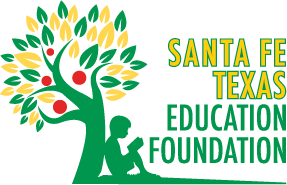
National Traumatic Brain Injury Awareness Month
For decades, the Brain Injury Association of America has raised consciousness in observing Brain Injury Awareness Month by conducting an engaging public campaign each March. The current campaign we’re observing is “CHANGE YOUR MIND” (BIAA 2020).
If we talk about the facts according to a report by the U.S. Centers for Disease Control, traumatic brain injuries accounted for nearly 2.2 million emergency department visits, 280,000 hospitalizations and 50,000 deaths (CDC 2019).
The CDC also reports a traumatic brain injury (TBI) as a disruption in the normal function of the brain that can be caused by a bump, blow, or jolt to the head, or penetrating head injury. TBI is a risk factor for everyone, especially children and older adults (CDC 2019).
Brain injuries can is identified in 3 terms normally, which are – mild (concussion is the most common), moderate, or severe. And the causes of such injuries can be traumatic or non-traumatic.
A traumatic brain injury (TBI), is the result of a severe brain injury caused by a fall, motor vehicle accident, gunshot wound, etc.
A non-traumatic brain injury results from something going on inside the body — a stroke, tumor, lack of oxygen, etc.
What are the symptoms of a brain injury?
● Headache that gets worse and does not go away
● Weakness, numbness, or decreased coordination
● Repeated vomiting or nausea
● Slurred speech
● Look drowsy or cannot wake up
● Have one pupil (the black part in the middle of the eye) larger than the other
● Have convulsions or seizures
● Cannot recognize people or places
● Are getting more and more confused, restless, or agitated
● Have an unusual behavior
● Lose consciousness
(CDC 2019)
Some of these symptoms may appear immediately, and some of them noticed post-injury in days or months. At times, people do not recognize or admit that they are experiencing lingering symptoms that can interfere in daily activities.
Treatments for TBI – Traumatic Brain Injury
Ideally with any mentioned signs of moderate or severe TBI should receive medical attention as soon as possible. For example, just as no two people are exactly alike, no two brain injuries are exactly alike. For some, brain injury is the start of a lifelong disease.
A brain injury requires access to a full continuum of treatment and community-based support provided by appropriately educated clinicians serving on an interdisciplinary treatment team. The individual who sustains a brain injury and his or her family are the most important members of the treatment team. Their choices, goals, and backgrounds must always be considered in treatment planning (NINDS 2019).

Diagram Courtesy of Brain Injury Association of America
The diagram above depicts brain injury treatment in an orderly progression from trauma care to community integration. Individuals who sustain brain injuries may enter, exit, and re-enter treatment at any point along the continuum. Treatments can be needed continuously or on an intermittent basis throughout the individual’s life (BIAA 2019).
When to Go to the ER with a Head Injury
You now have valuable information on different kinds of brain injuries and symptoms. To avoid permanent damage and disability, it’s urgent to seek emergency medical treatment when a head injury shows signs of concussion or trauma.
Our Board Certified ER Physicians are the best resource for giving an immediate diagnosis and treatment for head injuries. Time is of the essence. Our medical facility promises priority service to anyone presenting head trauma. We’re here to reduce the risk of long-term consequences that often result from brain trauma. We’re open 24/7 365 days to serve your family in any medical crisis. A Board Certified ER Physician matters and we will ensure an optimal outcome for every patient.
Works Cited
“Treatment.” Brain Injury Association of America,
www.biausa.org/brain-injury/about-brain-injury/treatment.
“March Is Brain Injury Awareness Month.” Brain Injury Association of America, www.biausa.org/public-affairs/public-awareness/news/march-is-brain-injury-awareness-month
“Basic Information about Traumatic Brain Injury.” Centers for Disease Control and Prevention, Centers for Disease Control and Prevention, 6 Mar. 2019, www.cdc.gov/traumaticbraininjury/basics.html.
“Symptoms of Traumatic Brain Injury (TBI).” Centers for Disease Control and Prevention, Centers for Disease Control and Prevention, 11 Mar. 2019,
www.cdc.gov/traumaticbraininjury/symptoms.html.
“Traumatic Brain Injury Information Page.” National Institute of Neurological Disorders and Stroke, U.S. Department of Health and Human Services, www.ninds.nih.gov/Disorders/All-Disorders/Traumatic-Brain-Injury-Information-Page.











